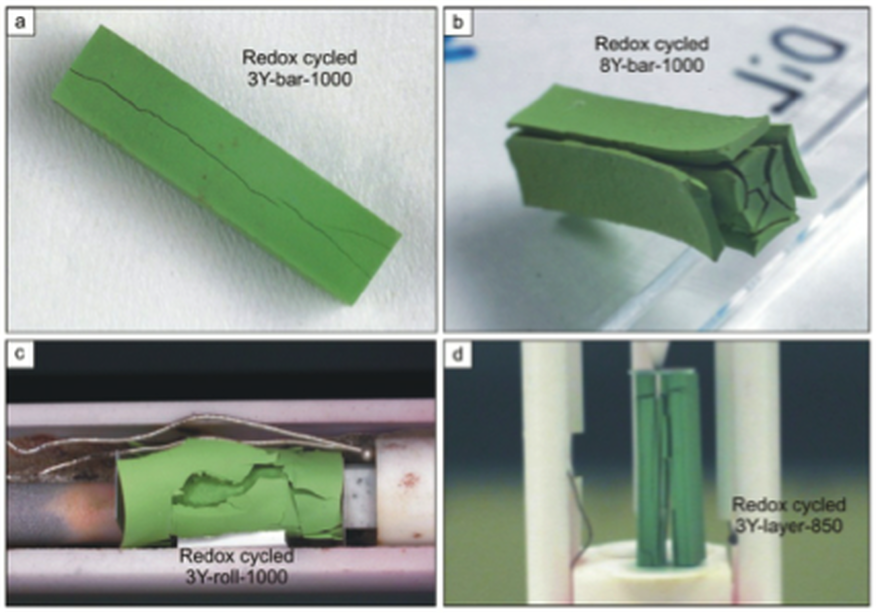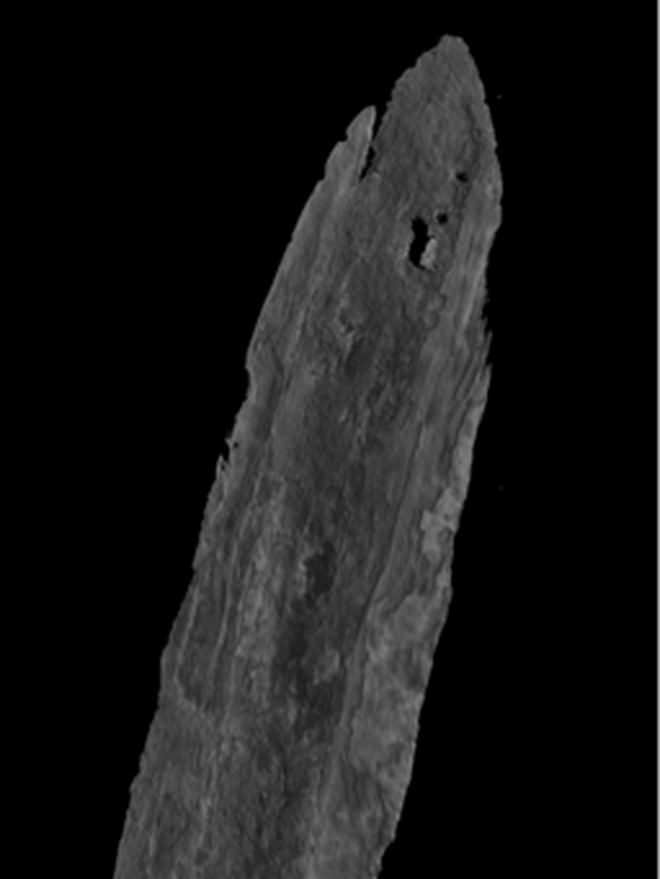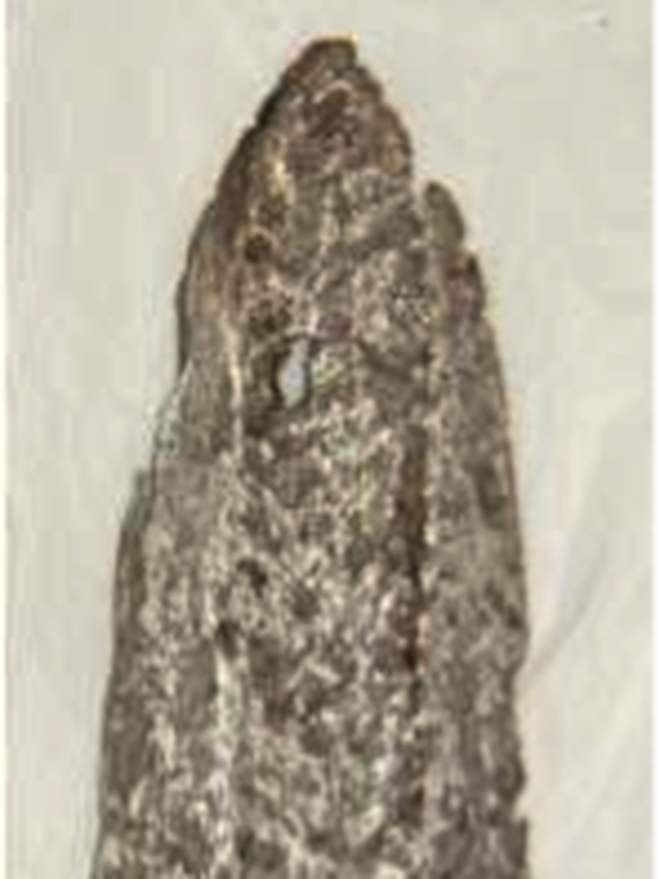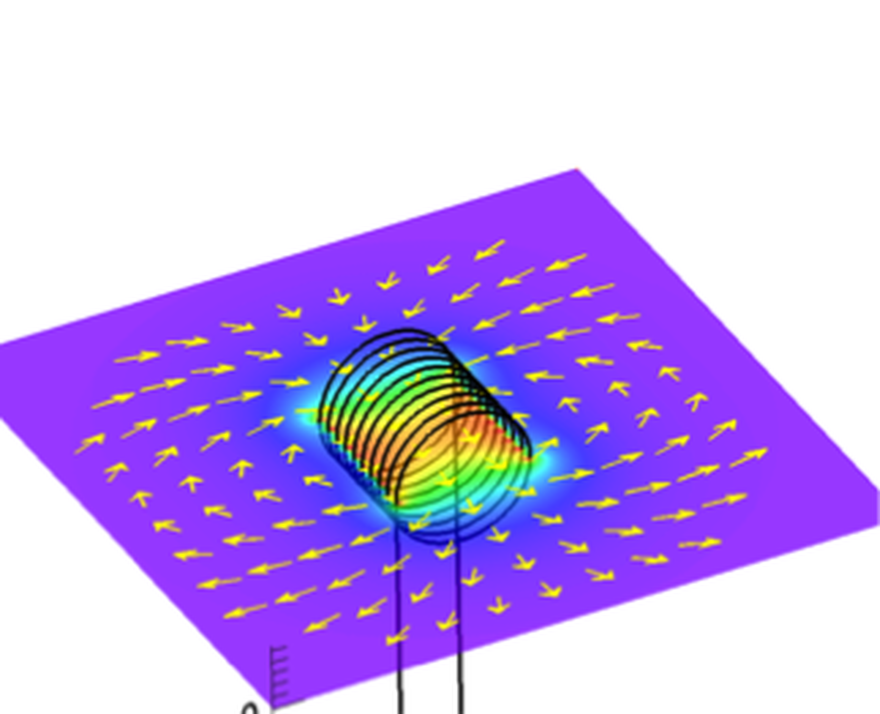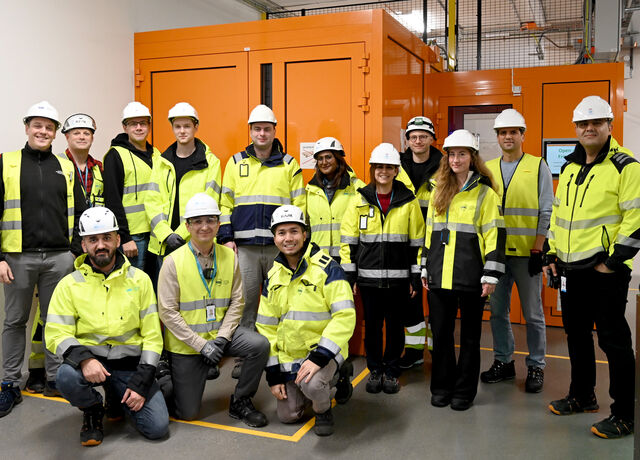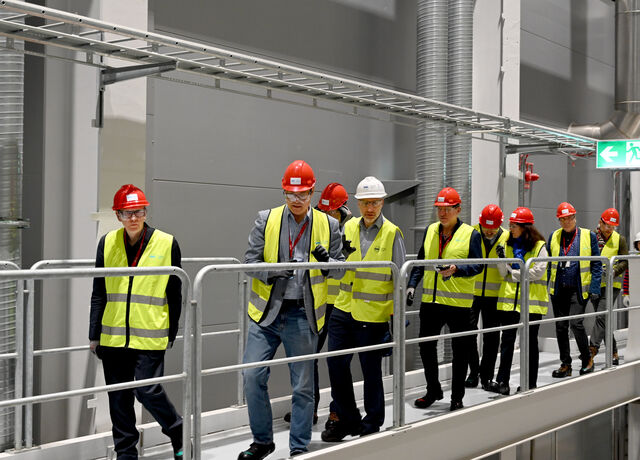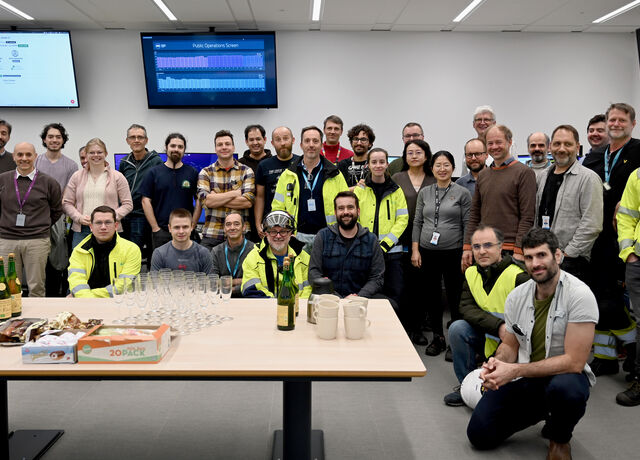Engineering Materials, Geosciences, Archeology & Heritage Conservation

Read about future science
Safer, Lighter and Stronger Engineering MaterialsDue to their large penetration lengths in many materials, and in particular in metals, neutrons are an invaluable tool for investigating engineering materials and components, geological structures and their dynamics, and historical objects whose detailed study reveals to us the basic data of our own cultural heritage.
Neutrons also enable the non-destructive investigation of most samples, making them the ideal probe to detect hydrogenous materials and to provide information about crystalline structures.
Current Science
Structural Integrity of Energy Conversion Materials
One of the greatest market entry barriers of the Solid Oxide Fuel Cells (SOFCs) is their durability. The goal of this project is to gain more insight into actual processes, which determine the microstructure and performance of SOFCs, in particular the phenomena generating strains and causing defects in the cells and thus influencing their lifetime. Most issues in SOFC development are a consequence of the high operation temperature (around 800 ̊C).
Currently we are analyzing the first in situ studies performed with the dedicated sample environment we developed for this purpose. Measurements have been performed at ISIS and PSI up to now and allowed us to follow the reduction and oxidation as well as deformation rates and cracking under various operation conditions.
Improving Dental Cements
Improved properties and increased longevity of dental materials can save significant costs and can minimize discomfort for patients. Despite their yet limited mechanical strength to survive in the challenging oral environment, the development of glass ionomer cements are an interesting option for dental fillings due to their good biocompatibility. The necessary prerequisite for further developments lies in a better understanding of the structure and hydration process of these cements. To investigate the hydrogen mobility within these cements and to shed more light on the highly complex pore structure and its development during setting of these materials we use neutrons and X-rays.
Imaging Deformation and Fluid Flow in Geomaterials
Understanding the controls on the permeability of porous rocks, such as sandstone, is important in a number resource engineering challenges, in particular hydrocarbon production and CO2 sequestration (in the first case fluids are extracted from subsurface geologic formations, and in the latter fluids are injected into the same or similar formations).
During such engineering operations deformation of the rock mass can occur that leads to alterations in the flow properties of the rock. However, deformation in these porous materials is, in general, not homogeneous as deformation localises into narrow shear or compaction bands, which might then evolve into fractures. These local deformation features can act as barriers to or conduits for fluid flow, depending on their evolution and resultant properties; their effect on flow is therefore a key factor in determining the storage or production capacity of a reservoir.
Neutron imaging is an ideal tool for the observation of fluid flow in rocks as hydrogen (in the flowing water) is highly attenuating to neutrons whereas sandstone, for example, is not. Therefore fluid distributions and movements inside a rock sample can easily be detected.
Understanding Historic Engineering
Historical metallurgy is one of the most interesting fields of archaeometry, especially with regards to the production and use of steel for arms and armour components. In order to correlate similar samples to a specific period or provenance, it is important to build trustworthy classification parameters that do not simply rely on aesthetics features. Scientific and technological investigations into these kinds of artefacts have usually relied on destructive analytical techniques, such as metallography. However, neutron techniques allow the measurement of bulk properties in a non-invasive way.
Inside Cereal Grains Planted Under ESS 6,000 Years Ago
We have with this project elegantly turned a full circle. Some of the first ever domesticated plants to grow in Sweden, grew under the ESS research facility 6000 years ago. The grains from this growth have been preserved and can be analyzed with the ESS technique, in turn, this will become the basis for the budding new interdisciplinary research providing answers to our questions about the past and providing knowledge for future use.
Towards Mapping the Grains of Engineering Materials
The aim of the project is to enable the reconstruction of the assembly of crystalline grains that engineering materials consist of and hence to observe and understand their development and aid and control the design of corresponding materials. The principles of such 3D Neutron Diffraction (3DND) approach are based on the corresponding X-ray technique of 3D XRD [1-3] which already now enables such studies with X-rays. The analogue neutron technique is meant to overcome the limitations to small, potentially not representative sample volumes. Two principle approaches are followed in this research development project.
Towards Mapping Magnetic Domains
Today’s global electricity market sizes to approximately 5 trillion watts. Large power transformers play an important role in this market, being indispensable for transporting electricity along high voltage transmission lines. As such, even a small gain in efficiency, by the sheer size of the market, immediately results in a huge energy and cost saving. The core of transformers is constructed of electrical steel, where the magnetization efficiency is determined by the intricate interplay between the steel crystallites and magnetic domains. This is a crucial relation concerning energy losses in transformers and thus insights and better understanding of this interplay leading to solutions to better tune related materials are key to limiting losses and increasing energy efficiency.
Tackling Hierarchical Structures in Applied Materials
Spatial modulation of neutron beams allows achieving structural information in the small-angle scattering regime, i.e. in the nm size range, which is just beyond direct spatial resolution of neutron imaging. Such beam modulation can be achieved currently through two different approaches. Spin-echo beam modulation has been tested to date for quantitative small-angle neutron scattering (SANS) and has proven to work in TOF mode (TOF-SEMSANS). Modulating the beam by a grating interferometer has been exploited extensively for dark-field imaging with only qualitative SANS information becoming available and seems limited for now for TOF applications due to the fixed grating geometry.
Scientific Potential of ESS Instruments Expands as Neutron Imaging Gets an Upgrade
Three recent review articles by ESS researchers and their colleagues highlight synergies in the development of the ESS instrument ODIN and advances in the field of neutron imaging.
Science Drivers
Neutron scattering has established itself as a unique and important probe for the structure and dynamics of materials due to the neutron's penetration power and its sensitivity to the presence of light elements, in particular hydrogen.
For Materials Sciences its widespread use ranges from the analysis of engineering materials and components, often with direct application in industrial R&D and construction materials, to geo-materials in Earth Sciences.
Read about future science
Safer, Lighter and Stronger Engineering MaterialsThe penetration ability of neutrons is of prominent importance. It allows scientists to investigate non-destructively the properties of bulk materials, complex assemblies such as multi-component devices, and to investigate inner structure and processes with high precision and sensitivity. Not only can various aspects of structures deep inside a bulk component be investigated locally, as in the case of engineering materials, but the penetration capabilities also allow the study of materials in complex sample environments in order to achieve extreme conditions under which materials, components and devices work, are operating or processed.
These studies have in common that samples are very often sensitive with respect to the chemical and physical parameters, such as the chemical composition and temperatures and pressures underlying the formation, and transformation of secondary phases in metals, minerals, the functionality and stresses of materials, and complex components in operation etc., in contrast to isolated and well-defined samples used for fundamental studies. However, the range of applications in these various fields collected in this section is naturally too broad to provide a full picture of the benefits of neutrons, and especially how the ESS instruments will contribute to the gain of invaluable knowledge in these areas in the future. Therefore, the discussion will be restricted to a few key areas and challenges ESS will be able to address. Keeping in mind what neutron scattering and imaging have already achieved in these fields, however, it is to be outlined how ESS can take applications, gain knowledge and technology further into the future, and where current limitations can be overcome. Here the high brilliance combined with efficient instrumentation due to the time structure of the ESS source will allow us to measure smaller samples under more extreme conditions and/or on shorter time scales, which is relevant for in-situ time dependent measurements, as well as higher spatial resolution, which together will allow us to address currently not amenable phenomena.
In Materials Science and Engineering, neutron scattering provides information about the composition, phases, microstructure and stresses in materials in ambient conditions, as well as a function of some external parameters. In particular, for engineering this encompasses alloy development, materials processing to joining technology, and gives engineers a unique insight into real components [1] used in aircraft, as well as power generation technology. Here ESS, with specific diffraction, imaging, and small angle scattering instrumentation, will allow, especially for in-situ studies, joining and processing and deformation, but also investigations of thermo-mechanical treatments and near-surface measurements of the effects of surface treatments, special combined macro-visualisation, and microstructural studies of components, as well as of new materials, due to technological demand like martensitic TRIP steels and precipitation hardening for aerospace, aluminium and nickel super alloys, to name but a few. Additional novel capabilities include magnetic phenomena of engineering relevance such as domain-structure design in transformer steels.

Additionally, in Earth and Environmental Sciences, the presence of water or hydrogen in general plays a major role. Neutrons are highly sensitive to hydrogen (as opposed to X-rays), which is present in minerals and rocks, regulating a large variety of behaviours and properties from the atomic to the macroscopic (continental) scale. There hydrogen is generally present in the form of free or bound hydroxide ions, within either structurally active sites or interstitial cavities in the crystalline structure. Neutrons enable not only measurements of structural changes in minerals at very high pressures and temperatures, the locations of light elements in complex structures, as well as strain measurements of polycrystalline aggregates under non ambient conditions (diffraction), but also the dynamical properties (spectroscopy). Such information is key for modelling and understanding fundamental processes in the Earth’s crust, ranging from large-scale phenomena, such as deep-focus earthquakes and volcanic activities, to the transport and disposal of pollutants in soil, but also to stone preservation in monuments, and water movement in rocks and soil with relevance in agriculture, e.g. connected to root growth (imaging).
Read about future science
Unlocking the secrets of waterHowever, in the future only ESS will be able to challenge phenomena structure-property relationships in mineral phases under geological conditions in in-situ measurements, e.g. ESS diffractometers allowing for extreme condition environments as well as structure, reactivity and physical properties of multi-component melts and fluids under such geological conditions. Furthermore ,investigations will become possible to allow for modelling of tectonic processes and rock anisotropies through texture and stress analysis of poly-mineralic rocks [2] (figure) but also geo-materials sands, in addition to unprecedented high resolution studies of water transport in rocks and soils in 4D through neutron imaging.
Industry relevant applications in this area range from hydrogen storage and transport, fuel-cell development (both of interest for sustainable energy and transportation technology), cooling processes, soot sedimentation, as connected to combustion processes, nuclear and other engineering materials (as outlined above), key construction materials, like concrete and wood, to name but a few. ESS instrumentation and source power will in particular allow faster and more detailed process monitoring and assessment, and provide results key for the optimisation of complex devices (engines, fuel cells, cooling, glued interfaces) especially, also through the unique combinations of methods like diffraction, SANS and imaging on such components.
Relevant instrumentation in these areas convey the planned high flux SANS, small sample SANS, cold and thermal chopper spectrometers, backscattering, multi purpose high resolution imaging, powder diffractometer, engineering diffraction.
References
[1] W Kaysser et al. Research with Neutron and Synchrotron Radiation on Aerospace and Automotive Materials and Components. ADVANCED ENGINEERING MATERIALS 2011, 13, No. 8
[2] H-R Wenk, 'Application of Neutron Scattering in Earth Sciences'. JOM, Vol.64 (1), 2012.
For Cultural Heritage, the penetration deep into complex specimens, to address their composition and structure non-destructively, is not only an invaluable aspect of the investigation of artefacts but also improves our understanding of historical artistic/cultural techniques, ancient manufacturing methods, and, when paleontological samples are addressed, even the evolution of life.
Similar to the study of complex devices and processes for industry, simultaneous diffraction/SANS/imaging studies linking macroscopic and microscopic structures and features are invaluable for sensitive samples of historical and cultural value, as well as their analysis and understanding of their origin and as such constitute a unique potential at ESS. Neutrons can penetrate through coatings and layers of corrosion, and there is generally very little need for cleaning or sample preparation.
However, some historical artefacts are very valuable, and special provisions have to be made for handling, storing and transporting the sample. Occasionally, the sample may become activated for a limited period of time and requires special, secured storage.
Additionally, neutrons have an advantage in the investigation of wooden materials[1]. The figure shows an Indonesian dagger sheath, which has a silver-containing metal cover outside and a wooden structure inside (Top: neutron transmission image: below left: visualised neutron tomography data; below right: visualised X-ray tomography data). It is only possible to investigate the inner wooden parts when neutrons are applied.
For Archeology, similar to cultural heritage, the penetration capabilities place neutrons at the forefront of non-destructive investigations of archeological artefacts [2,3]. A new complete and articulated specimen of a titanosaur egg has been investigated in ovo, the first of its kind and in the world (and hence too valuable for destructive testing), and only made visible by Neutron tomography. This finding attests that a group of lithostrotian titanosaurs was indisputably reproducing at the Aptian–Albian Algui Ulaan Tsav site, Mongolia.
Additionally, in some materials, the contrast between fossilised material and the surrounding minerals is so weak that only by using the phase change of the neutrons waves is it possible to reveal the inner structure of fossils.
References:
[1] E. H. Lehmann, D. Mannes, 'Wood investigations by means of radiation transmission techniques', Journal of Cultural Heritage, Volume 13, Issu[1]e 3, Supplement, September 2012, Pages S35–S43
[2] B. Winkler, "Applications of Neutron Radiography and Neutron Tomography", Reviews in Mineralogy and Geochemistry, 2006, v. 63, p. 459-471
[3] G. Grellet-Tenner et al, "Description of the first lithostrotian titanosaur embryo in ovo with Neutron characterization and implications for lithostrotian Aptian migration and dispersion", GONDWANA RESEARCH, Vol. 20 (2-3), pp. 621-629

























